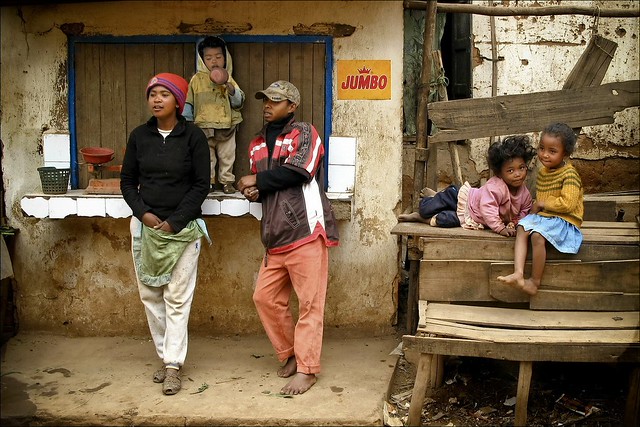Brief History Of Madagascar
Madagascar
Madagascar is the fourth largest island in the world. Because of its location Madagascar developed in isolation, the African island nation is famed for its unique wildlife.

Brief History Of Madagascar
Explore and Understand Africa Through Her Food and Culture
1-6-2010
Brief glimpse into the history of Madagascar
Madagascar
 |
| Harvesting banana leaves in Madagascar 1969 |
Madagascar, also known as the Republic of Madagascar, is an island in the Indian Ocean found off the southeastern coast of Africa. Formerly an independent kingdom, Madagascar became a French colony in 1896 but regained independence in 1960. The year 1960 witnessed the independence from France of 17 Sub-Saharan African countries and 14 French colonies.
Madagascar is the fourth largest island in the world after Greenland, New Guinea and Borneo and the home for around 5 percent of the world’s plants and animals. Madagascar has hundreds of types of animals and plants which exist nowhere else such as ring-tailed lemurs.
The World Bank in 2011 estimated 92% of Madagascar’s residents live on less than $2 per day, $430 per household a year. Poverty has put pressure on the island's dwindling forests, home to much of Madagascar's unique wildlife. Losing around 3 acres of forest in Madagascar has a greater impact on global biodiversity than losing 3 acres of forest anywhere else on Earth.
Madagascar is important to the environment of the world. Nearly 80 percent of Madagascar’s population depends on making their living and eating day to day through agriculture. Using slash and burn cultivation techniques, farmers often destroyed what made their home so ecologically important.
A few facts about Madagascar
Population
as of 2014
Around
23.5 million
Capital
Antananarivo
Agricultural
products produced
Coffee,
vanilla, sugarcane, cloves, cocoa, rice, cassava, manioc, tapioca, beans,
bananas, peanuts, and livestock products
Nationality
Malagasy
Ethnic
groups
Malayo-Indonesian,
Cotiers, French, Indian, Creole, and Comoran
Languages
French,
Malagasy, English
Religions
Indigenous
beliefs 52%, Christian 41%, and Muslim 7%
Getting to Know Africa
Historical African Country Name
Top 20 Largest Countries in Africa
How many countries does Africa have?
Learn more about Africa.
Roots of Africanized Christianity Spiritual Songs
Chocolate Processing Facts History and Recipes
Awesome Kenyan Woman
Land is Not For Women in Sierra Leone
African Kente Cloth Facts
Accra the Ghanaian Capital Ultimate Mall Experience






